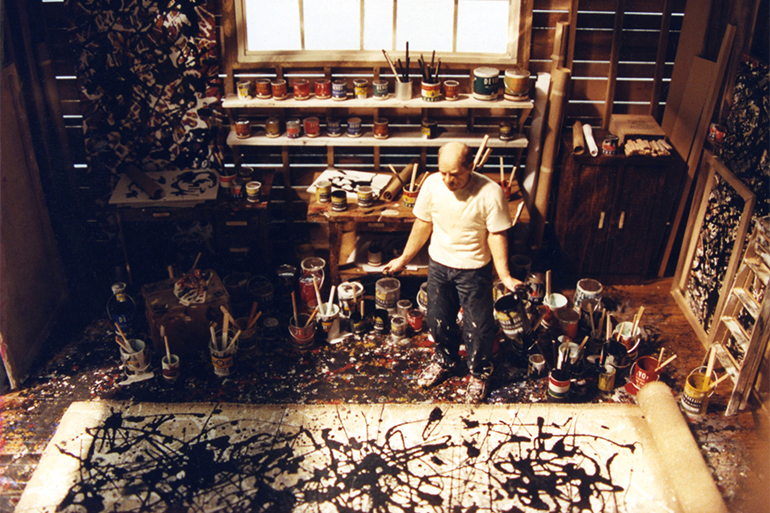High Brow, Low Brow? Who Buys Art, Who Makes It and Who Sells It

Several months ago, I got a brochure from Galerie St. Etienne in Manhattan that listed some of the works of art they had for sale. That was on the back of the brochure. On the front, over four pages, someone from the gallery had written a history of art and the art world, with reference to taste, motivation and finance, from the beginning of the Industrial Revolution to the present day. It was fascinating.
Prior to 1850, most art in the Western world—read Europe—was created by painters and sculptors at the request of aristocrats. These aristocrats—kings and queens, often, together with their courtiers and royal advisors—determined what was art and what was not. After 1850, however, the Industrial Revolution and the Age of Invention turned things upside down. So much wealth was created by 1900 that the gap between rich and poor widened. Also during this period, a middle class rose up, largely from among the great unwashed who were now doing well working in factories.
These people, however, did not, at this time, express much interest in great art. But they did demand a voice in the affairs of their governments, and so became Socialists or Republicans or Communists or Royalists, and as the years went by they wrested control of their countries from these aristocrats, resulting in either democracies or dictatorships. Wars then created devastation, and in 1929 things came apart in the Great Depression. With that, the enormous wealth of many of these countries suddenly disappeared.
After the Second World War, with America now in the lead, the engines of industrialization resumed once more in the Western world, this time with a more prosperous middle class who had the funds but still had little appreciation for art, and for what was or was not art.
This created a new dynamic. Artists and writers, beginning around 1950, began to see themselves as a sort of intelligentsia whose job it was to tell the middle class what art was, and if they didn’t go along with it, hold them up for ridicule. It was the first time in history that artists rejected part of their own support base.
Observers at the time looked at the situation and declared there were now only High Brow, Middle Brow or Low Brow people, and those in the latter two categories—the formerly great unwashed—needed to be educated. They now did begin to appreciate art, but it was a Low Brow art, which included comics, popular music, Hollywood films, illustrations and other things that the High Brow described as “kitsch.”
“(The job of the high brow),” according to Harper’s Magazine editor Russell Lynes at the time, “was to protect the Arts from the culture mongers, and to spit venom at those he suspects of selling the muses short.”
In 1945, the center of the art world moved, at the end of World War II, from Paris to New York. And into this mess came the likes of Willem de Kooning and Jackson Pollock, who dripped paints on canvases set on the ground, sometimes even from atop ladders. And with that, the center of Abstract Expressionism and Modernism shifted for a time to the East End of Long Island.
It’s good to pause for a moment here and look at how this dynamic between High Brow and Low Brow played itself out on the East End. This little ramble is not in the Galerie St. Etienne pamphlet.
There had always been Bohemians, self-described High Brows, who had come out here. In the late 1880s, some visited East Hampton and clowned around here amidst the farmers. They put on the straw hats that farmers wore and called the nice inn they were staying at “Rowdy Hall,” for their troubling anti-social behavior there. In the 1930s, rowdy behavior by artists, actors, writers and filmmakers caused proper millionaires to add to deed restrictions that these properties should not be sold to “Entertainers.” (Jews were already in this category.)
And so, in the 1940s and 1950s, American artists and writers swarmed into the Hamptons to revel in this area that had now been crowned the center of Abstract Expressionism. Jackson Pollock was a bad-mannered drunk in New York, though famous. One day, at a party given by his gallery owner, Peggy Guggenheim, he got so drunk that he peed in the fireplace, and she summarily banished him to the Hamptons by buying a home here for $5,000 and installing him and his wife in it indefinitely in exchange for some of his paintings.
Edward Albee, the playwright, moved here. Playwright Arthur Miller and his wife Marilyn Monroe spent a summer here. Artist Willem de Kooning arrived. Writers such as John Steinbeck, James Jones, Peter Matthiessen, George Plimpton, Peter Maas, Leon Uris, Truman Capote and many, many others moved here to enjoy the intelligentsia already here, as well as the peace and quiet of this place, and they also rubbed shoulders here with the Wall Street billionaires who came as the result of an even greater gap between rich and poor in America.
This current era is a new age, and it’s been compared to the Gilded Age at the end of the 19th century. Many heroes of the time are now celebrated and highly paid for what was formerly considered “Low Brow”—the bane of the intelligentsia—music, Hollywood, sports and fashion. And so we’ve had Billy Joel and Paul Simon, Craig Claiborne and Martha Stewart, Steven Spielberg, Eli Manning, JLo and P Diddy. And at the financial end, such players as Michael Bloomberg and Ron Perelman.
It’s all become about the internet and social media. With its countless cat videos, airplane crashes, fake news, online games and online friends, in the art world, money began to rule. A single painting, Leonardo da Vinci’s “Salvador Mundi,” sold for $450.3 million at Christie’s last winter, and the fact is, returning to the leaflet, that “the art market is increasingly controlled by the major auction houses and a handful of high-powered dealers which have vast teams of registrars, preparers, social media mavens, researchers, writers and sales associates to achieve market saturation on a global scale.” As for galleries, there are just four galleries that count—Gagosian, Hauser & Worth, Pace and David Zwirner, and “everyone else is not them.”
The leaflet quotes Marc Porter, Chairman of Christie’s Americas: “At the core of how we approach our business…is that there is an underlying story to tell about the collectors and their works of art which brings to life and excites buyers.”
Today’s dominant narratives, it seems, are being written by auctioneers, the pamphlet states.
It also blames the media.
“Professional art criticism was effectively obliterated by a journalistic obsession—both in the surviving print media and online, with glamour, scandal and money.”
But smaller galleries have banded together to be able to provide similar backstage support. The pamphlet calls the cities where networks of small galleries are now sharing space as “Art Basel Cities,” and they are seeding art-world infrastructure to regional capitals like Buenos Aires.
But looking at this, one wonders, what happened to the aforementioned High Brow intellectualism? Where does the idea of starving one’s self in a small, unheated garret for the sake of art belong in an age where the wealthy once again are the go-to people who can afford art?
“The ascetic highbrows have been replaced by ‘thought leaders’ who kowtow to wealth and equate the ‘marketplace of ideas’ with the financial markets. Any pretense of a firewall between art and money has been abandoned….artists promote themselves.”
The pamphlet concludes with the thought that perhaps the American Century is over, and directions and new ideas might appear in China or the Middle East.



